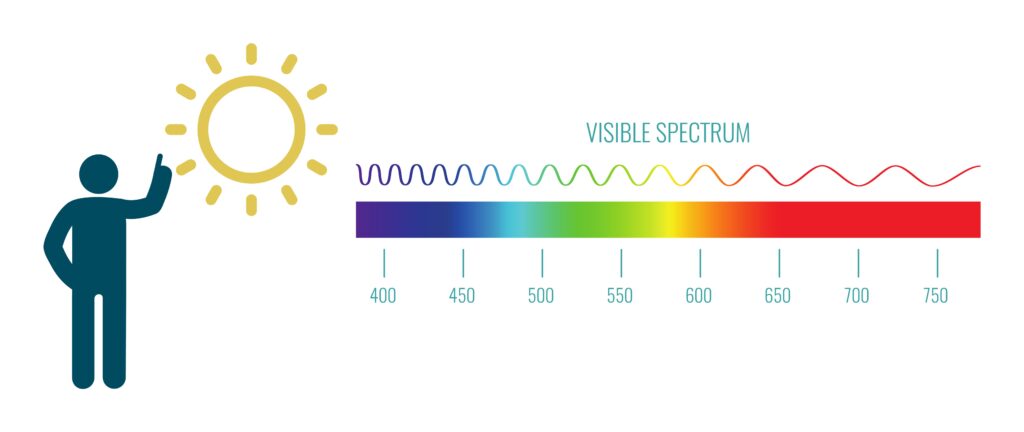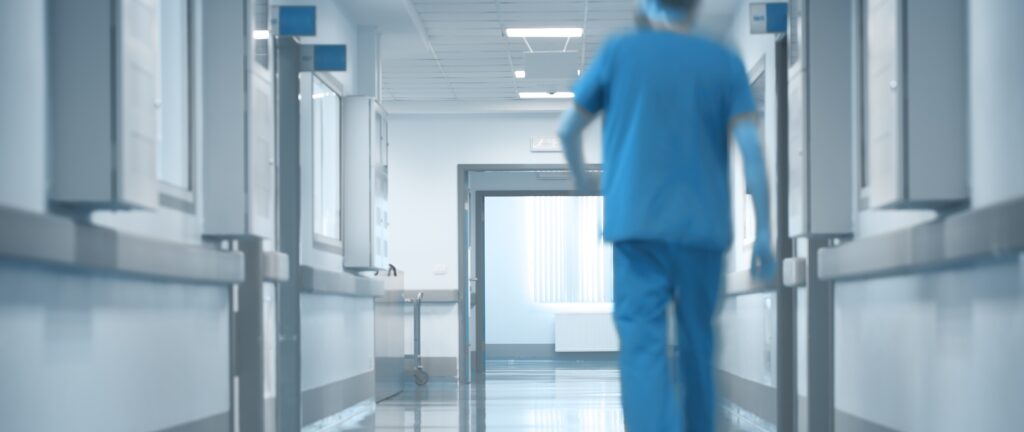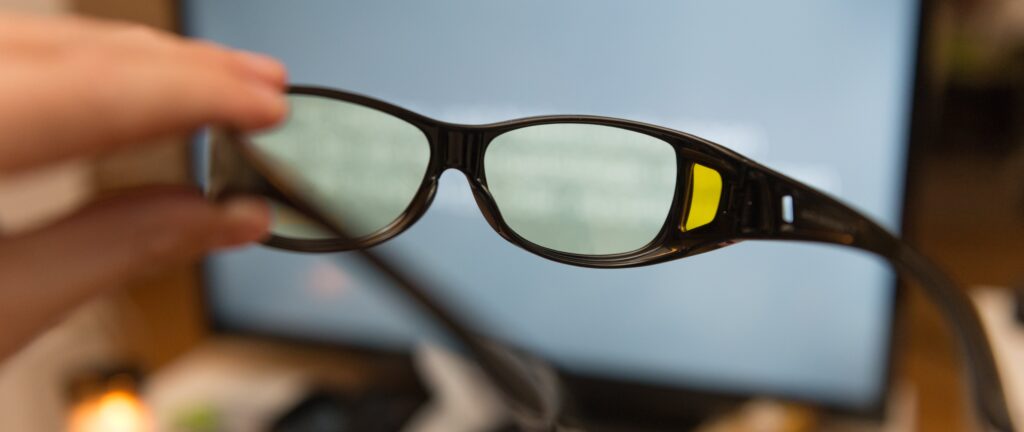Here we are at the Winter Solstice, that annual occurrence in the Northern Hemisphere when days are at their shortest and nights at their longest. As the earth’s axis begins its journey back the other direction, our days will begin to lengthen, but not noticeably for quite a few more months—we are still in the dark times.
That tends to mean that we’re spending a lot more time indoors in general, and at night, we don’t think much of flipping the light switches on and chilling on the couch with our favorite binge series. However, as we’ve discussed before in our Healthy Sleep Series post on melatonin, so much of our health depends on cycles of light and dark exposure.
Unfortunately, artificial light can disrupt these cycles by preventing the proper signals from reaching our brain. Sleep is a complex biochemical process and it doesn’t take much to get it all out of whack, so let’s learn more about blue light and how it affects us.

The Full Spectrum
If we think back to elementary school when we learned about rainbows, we discovered that light from the sun can be divided into its constituent color bands of red, orange, yellow, green, blue, and violet. This is the visible part of the light spectrum.
Blue light in and of itself is not problematic. As part of natural sunlight, it can boost mood, focus, and reaction time. Getting regular exposure to sunlight in the morning and during the day is shown to help with sleep, as well as overall health. The troubles occur when we move indoors, and these days, people tend to spend a lot more time inside than in generations past.
Research has shown that blue wavelengths, especially at night, are particularly good at preventing proper melatonin release. Most indoor lighting contains blue light, and some types like fluorescent light bulbs and LEDs are especially blue. And then there’s those constant presences of our modern lives—TVs, computers, smartphones, and device screens—beaming blue light directly into our eyes for hours a day.

Feeling Blue
A special population of folks helped researchers understand our bodies’ response to light when it was observed that shift workers, like nurses, doctors, police officers, and restaurant servers, who work outside regular daytime hours tend to suffer from a collection of health concerns. These can include cardiovascular disease, digestive issues, diabetes, obesity, and even certain types of cancer. While working irregular hours is enough to cause some discomfort, research is showing that exposure to blue light during nighttime hours is also to blame. That’s something shift workers get plenty of through energy-efficient lighting (think hospitals and convenience stores) and all the screens they’re working on.
When we disrupt the hormones governing our circadian rhythms, there are downstream effects on our neurotransmitters, other hormones, and our immune system. And because blue light is such an accepted part of our human-made environment, it can be a sneaky factor when we don’t feel so great.
So what can we do?

Warming Up
If you experience any kind of sleep disturbance, trouble regulating blood sugar, undesired weight gain, or ongoing fatigue, managing your blue light exposure is worth looking into. These simple lifestyle tweaks may also help you reduce stress and ease depression or anxiety.
- Get outside. Studies indicate that 10-15 minutes of morning light is especially effective at helping with sleep regulation and melatonin production, but heading out during your lunch break or for an after-dinner walk are also helpful. It can’t be through a window, and be sure not to wear sunglasses during this time.
- Be disciplined about exposure. It can be tough, but it’s best to avoid looking at any screens for two hours before bedtime.
- No screens or extraneous light in the bedroom. Sorry folks—no TVs, tablets, or phones in bed! These are all major sleep disruptors. Be sure to eliminate any extra sources of light like nightlights or bright digital displays as well.
- Mimic natural light cycles. Lower the lights when it begins getting dark—some people even go for candlelight. Consider switching out fluorescent and LED light bulbs for healthier light sources.
- Go for red light. For reading and night lights, use red lights. Himalayan salt lamps give off a great ambient warm light.
- Block the blue. Blue blocking glasses come in two types: clear and amber tinted. Clear are for all-day use and look just like regular glasses. Amber-tinted glasses are for nighttime wear. Both are great options for shift workers or those who spend lots of time on screens. Be sure to purchase glasses that specifically block blue light, not just any with colored lenses.
- There’s an app for that. Many screened devices have settings now for automatically shifting to a warmer light spectrum emittance at sundown. If yours doesn’t, it’s likely you can download an app for it—try f.lux for free. Don’t take this as a sign that it’s okay to use your screen at night, it’s only back up.
Resources
- Dr. Andrew Huberman is all over this particular lifehack, his popular podcast The Huberman Lab has covered healthy sunlight protocols several times. He has a whole section devoted to light exposure and circadian rhythm management—go geek out!
- For a wide selection of daytime blue blocking glasses, check out Yes Glasses. Lots of stylish ways to protect your brain.
- For all your non-blue lighting needs, BlockBlueLight.com has you covered. Shop for reading lamps, amber-tinted nighttime glasses, healthy lightbulbs, recessed lighting replacements, LED strip lights, and more.
- If you need an alarm clock so you’re not tempted to scroll on your phone, check out options that wake you gently with healthy light from companies like Dekala, Loftie, and Hatch. Some models include options for white noise and restful sounds, different colors, and even bedtime meditations.
Thanks so much for reading! Hopefully not at night on your phone in bed… Follow us on Instagram and Pinterest, and stay tuned as we cover red light next week, and then Seasonal Affective Disorder (SAD) after that. In the meantime, Happy Solstice and sweet dreams!
THIS ARTICLE DOES NOT PROVIDE MEDICAL ADVICE
The information in this article, including but not limited to text, graphics, images, and other materials, are for informational and educational purposes only. No material here is intended as a substitute for professional medical advice, diagnosis, or treatment. Please consult your physician or other qualified health care practitioner with any questions or concerns you may have for your care.

